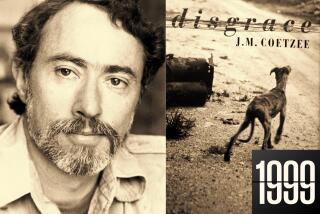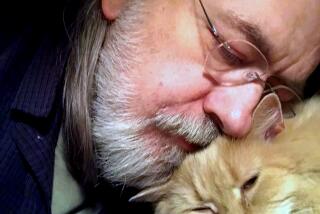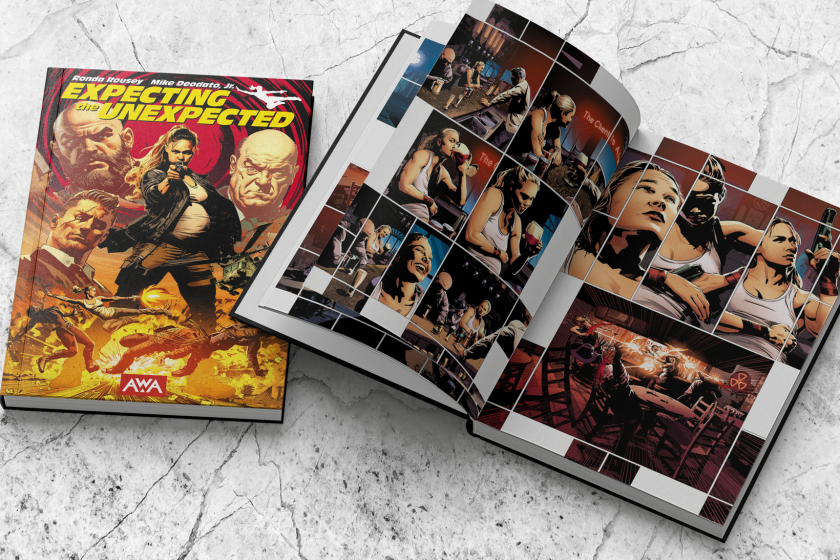The Perils of Pauline
Jazz critic Francis Davis spent two days interviewing Pauline Kael at her home in the Berkshires in July 2000; she would die of Parkinson’s, at age 82, on Labor Day of the following summer. “Afterglow” thereby bills itself as her “last conversation.” Though Kael’s characteristic tart wit and lapidary intelligence light up this slim volume, it is essentially a sad document. Not because Kael was in decline, or backtracking from her most provocative ideas--quite the contrary. But here is a chance to listen in on one of the greatest critics (and writers) of the 20th century, a woman who challenged us to rethink our responses to, and ideas about, movies in particular and American culture in general. Yet what Davis gives us, for the most part, is not an exploration of those ideas but 100-odd pages of sycophantic chitchat about favorite television shows and movie stars. The schmaltzy title of this book (so at odds with Kael’s insistent anti-sentimentality) could be replaced with “Wasted.”
This missed opportunity is especially too bad because Kael’s key ideas have seeped into the culture--and into the writing of far too many critics--in vastly simplified if not deformed ways. Like those who lazily, mistakenly claim that Marx was interested only in economics and Freud only in sex, a vulgar Kaelism--which posits that trash and art are synonymous, and that any film enjoyed by large numbers of people must be a work of meaning--underlies much of what passes for criticism today.
Of course, film is a mass art form, and it’s true that Kael, like her predecessors Gilbert Seldes and James Agee, loathed the pretensions of middlebrow culture and dug the spunky, demotic aspect of American life and culture. But she never mistook trash for art; never thought it elitist (or unimportant) to distinguish the two; never put forth that there was any connection, organic or otherwise, between the widely accepted and the good. Kael believed that every moviegoer could develop an aesthetic--but not that one necessarily would, just as she believed that a talented filmmaker could use lowbrow forms to create art, but not that the ability to master such forms could ever make one an artist. In short, she was a democrat but not a populist.
It has also been all too easy to mistake Kael’s hatred of moralistic movies for moral relativism. Kael, like Agee, despised films that were sanctimonious, respectable or self-righteous. But this doesn’t mean she was immune to questions of value, nor that she adhered to the odd notion that if it makes you feel good, it is good. (She was often most suspicious of precisely those films that made audiences feel good, and wondered why they did and at what cost.) No one who has read, say, Kael’s paean to “Shoeshine,” one of the great humanist works of the 20th century--or, alternately, her fierce denunciation of the exultant sexual sadism in Sam Peckinpah’s “Straw Dogs”--can doubt her moral seriousness. Her criticism--admittedly often vitriolic--of uplift films was evidence not of moral obtuseness but of her ethical spine. She regarded “virtuous” films as too easy, too smug, too evasive, as instruments with which audiences could flatter themselves about their unerringly good intentions and unquestionable moral superiority.
In short, she regarded such films as advertisements for ourselves, and she regarded them as sleep-inducing lies. What she sought instead were movies that revealed some truth (whether large or small, tragic or hilarious) about us: as lovers and spouses, children and parents, citizens, Americans, modern men and women. It was authenticity, not sincerity, that interested Kael.
Glimpses of all this appear in “Afterglow.” Kael reiterates her antipathy to “Schindler’s List” and, more controversially, “Shoah.” Her views on violence remain nuanced, focusing on the what-for rather than the how-much: Thus she denounces “The Silence of the Lambs” as “hideous” while the almost unbearably brutal “Casualties of War” remains, in her view, a “beautifully felt” work akin to “Grand Illusion.” “Afterglow’s” flaw is that these nuggets remain just that, unexamined and undeveloped by Davis.
Kael also approaches the high/low question in her characteristically textured way: “One of the great things about movies is they can combine the energy of a popular art with the possibilities of a high art,” she says. “What’s wonderful about someone like Altman is that mixture of pop and high art. He’s an artist who uses pop as his vehicle. That’s part of the excitement in a movie like ‘Nashville’ ...Godard’s ‘Weekend’ is another case in point.” Here, in a nutshell, is one of Kael’s key critical insights, one that underlies so much of what she wrote and admired and wanted other people to see and grasp and debate. Again, though, rather than follow up on this--and what an interesting, though perhaps less glowy, last conversation that would have been--Davis inexplicably asks about Kael’s writing schedule at the New Yorker.
Indeed, a fascination with the inner workings of that magazine pervades “Afterglow.” We learn that Kael was shocked by fellow critic Renata Adler’s vicious attack (published in the New York Review of Books), that the piece was a “group effort” of (unnamed) New Yorker writers, that editor William Shawn was “devious” and that he regarded Kael as a “barbarian.” (For those truly obsessive fans of the magazine, “Afterglow” even offers tidbits about its fact-checking techniques.)
Yet there is something not quite right, indeed uncomfortably self-serving, about Kael’s descriptions of the New Yorker and her role in it. Kael paints Shawn as a sort of prudish commissar, a man of “dowdy” attitudes who attempted to impose “pristine” language on his writers--or, even worse, tried to make them impose it on themselves. This was undoubtedly true in some senses and some cases. But the magazine was also home to some of the most incisive, challenging critics in the country--actually, the world--including Kael’s contemporaries Kenneth Tynan, Calvin Tomkins and Arlene Croce. These writers are about as un-dowdy as they come.
How, if at all, did their ideas influence Kael? Was she really the courageously lone voice in the wilderness she makes herself out to be? Is there no cultural or critical tradition she could place herself within? Kael’s self-presentation as the Bad Girl of American Criticism is, like most self-presentations, glaringly incomplete; it’s a shame that Davis didn’t challenge her on it.
On the simplest and most important level of language, Kael is an interviewer’s dream: one of those rare people who speaks almost as beautifully as she writes. Her evocative phrases spin out, abundantly and spontaneously: “impertinent snip,” “poisonously crude,” “frivolous and negligible.” She is witty, too, as when she describes the New Yorker’s aging readership under the Shawn regime as “dying off faster than Sol Hurok’s customers.”
So the tepidness of “Afterglow” is due not to its subject but rather only to its author, who explains that he considered himself Kael’s “sounding board.” Admittedly, not every interviewer can (or need) be a combative Oriana Fallaci, but couldn’t Davis have pushed just a little? His passivity--and his dreadful need for Kael to like him--prove fatal. He flatters her often--something she does not resist--creating a dynamic that is embarrassing to them both. Worst of all, he seems afraid of Kael. This is neither a crime nor a surprise--indeed, who wouldn’t have been?--but he should never have let it show.
Kael grappled with the movies, and with what they mean for us, in a way that no writer has before or since. She believed that the late 1960s and the ‘70s--the era of Altman, Scorsese, Spielberg, Truffaut, Godard, Coppola, De Palma, Bertolucci--had ushered in a new age of intelligent, risky, challenging films that might change the way you viewed the world or even lived in it. She believed that filmmakers would continue making such films, and that audiences would continue supporting them, and that a wonderfully fertile artist-viewer dialectic would thereby be created. She believed, too, that our war films might become anti-war films and that film violence might--as she poignantly wrote in her controversial defense of “Bonnie and Clyde”--”so sensitize us that we get a pang in the gut if we accidentally step on a moth.”
She believed all this, she staked her life on it, and she was wrong. The filmmakers changed, gravitating toward safe little movies or sensational blockbusters, or losing their gifts and their nerve, or finding themselves unable to obtain financing; the audiences changed, seeking safety or escapism or mindless special effects; the violence increased to horrific, soul-numbing levels that evoked ecstasy rather than revulsion.
Kael loved the movies, and they broke her heart (though not, it’s clear from “Afterglow,” her spirit). “It’s difficult to be a critic of mass culture,” she tells Davis. “You write about so much crap that you begin to be contemptuous of what you’re writing about.” Later, she adds that “if you write critically, you have to do something besides get excited. You have to examine what’s in front of you. What you see is a movie industry in decay, and the decay gets worse and worse.” Yet she remains wonderfully devoid of bitterness and can even find humor in her defeat: “It’s not fun writing about bad movies. I used to think it was bad for my skin.” (Her writing, however, always suggested that it was in fact fun.)
Is the trajectory Kael describes--her own, and that of American movies--an inevitable one? If so, what does that mean for the hope that we Americans can create an inclusive, democratic culture that is also one of distinction and quality, and that can challenge our intelligence rather than cater to our prejudices? Must this utopian vision, like so many others, be renounced? Or could it be revived? What would that take? Kael is gone, but the questions remain; she cannot answer them, but we will have to.
More to Read
Sign up for our Book Club newsletter
Get the latest news, events and more from the Los Angeles Times Book Club, and help us get L.A. reading and talking.
You may occasionally receive promotional content from the Los Angeles Times.





